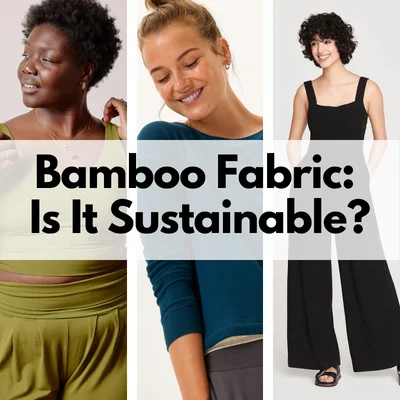Handy Facts For Selecting Hemp Clothing
Wiki Article
What Are The Advantages Of Hemp Clothing Made From Low-Impact Fibres? Clothing For The Sustainability Of The
Low impact fiber hemp clothing provides numerous environmental benefits when as compared to clothing made from other materials, particularly synthetic fibers and conventional cotton. Hemp clothing is environmentally friendly. It grows quickly and requires minimal water, pesticides, or herbicides in comparison to other crops. Hemp grows well in a variety of conditions and soil types. It also reduces the need of chemical pesticides in agriculture.
Hemp needs less water than cotton, which is known for its heavy consumption. It makes hemp a efficient choice for production of clothing.
Hemp is grown in most cases without the use pesticides or herbicides that are synthetic. This is less of an environmental impact than conventional farming.
Hemp cultivation can boost soil health by preventing erosion and compaction. Hemp cultivation also enhances soil fertility for future crops.
Biodegradability Hemp fibers break down naturally and biodegradable over time. In contrast, synthetic fibers like polyester are able to decompose in a matter of hundreds of years.
Lower carbon footprint. The production of hemp fibers is typically less carbon-intensive than the production of synthetic materials. Furthermore, hemp is able to take in carbon dioxide in its growth and act as a carbon storage.
Hemp clothing has earned a reputation for durability and long-lasting wear. Hemp clothing of high quality will last for many years. This means that there is less need to replace it regularly and also waste.
Hemp plants have the natural ability to resist many pests. Chemical pest control is not necessary.
Flexibility- Hemp is a great material in a variety of textile uses, including clothing, bags and accessories. This makes it a scalable and sustainable option for textiles and fashion.
Regenerative Agriculture - Certain sustainable farming practices can be found in hemp in regenerative agricultural systems that are designed to restore ecosystems and enhance them while producing crops. This strategy could positively impact the environment.
It's crucial to keep in mind that although hemp has many environmental benefits, the total sustainability of clothing is contingent on other elements, including the dyeing process, transportation and consumer behavior. Like any other industry, there are variations in the standards and practices used for production. It is essential to select certified organic or sustainable clothing to get the best environmental benefits. Have a look at the most popular hemp clothes for blog tips including hemp jacket, hemp shirts mens, patagonia work pants hemp, hemp fleece fabric, hemp shirts wholesale, hemp button shirt, hemp sweatshirt, patagonia hemp island pants, hemp button down shirt, hemp yoga pants and more.

What Are The Benefits Of Hemp Fibers With Regard To Carbon Sequestration?
Hemp fibers contribute to the storage of carbon, sustainability and crop rotation in many ways. They are an excellent choice for textile and agricultural production.
Fast growth- Hemp is a fast-growing plant that matures within 70-120 days, based on the variety and growing conditions. During the rapid growth phase hemp plants are able to absorb carbon dioxide (CO2) from the atmosphere as part of photosynthesis. The carbon uptake is a major contributor to carbon sequestration by cutting down the amount of CO2 in the atmosphere.
The high amount of biomass produced by hemp is well known. The dense foliage and tall stalks of hemp produce massive amounts of organic matter. This biomass is able to create organic carbon in soils or to be used in other ways.
Sustainability:
Hemp farming uses less synthetic pesticides. It also requires fewer herbicides. Its natural resistance to many pests and diseases reduces the need for chemical intervention. Organic hemp farming, in particular is a sustainable farming method by avoiding synthetic chemicals.
Water Efficiency- Hemp is a relatively water-efficient crop that can thrive with little irrigation, particularly when compared with more water-intensive crops such as conventional cotton. This makes it more feasible in areas in which water is scarce.
Soil Health- Hemp's deep root system can improve the soil's health. The hemp's roots help to prevent soil erosion, by stabilizing the structure of soil and reducing runoff. Hemp cultivation can also boost the microbial activity in soil. This promotes nutrient cycle and soil fertility overall.
Hemp may be included in the rotation of crops. The practice of crop rotation is to alternate different crops in the same field for a period of time. This method can help break cycles of disease and pests as well as reduce soil depletion and improve soil structure. Hemp's importance in crop rotation is crucial to the sustainable farming.
The rotation of the crop
Hemp can also be added to crop rotations alongside other crops, such as vegetables, legumes or grains. Diversification can help farmers maintain soil health and decrease disease and pests. It also aids in balancing nutrient cycles.
Hemp roots penetrate the soil and aerate it, which decreases compaction and increases the infiltration of water. Improved soil structure is beneficial to the crops after hemp.
Summary- Hemp fibers positively impact soil quality, they are compatible with crop rotation, and improve the carbon sequestration process and sustainability. They accomplish this by the rapid growth of biomass, low chemical usage, water efficiency and their compatibility with crop rotation systems. This makes hemp cultivation a green and sustainable agricultural practice. Take a look at the best hemp clothes blog for more info including hemp boxer shorts, hemp textiles, hemp shorts patagonia, patagonia ranch jacket, hemp textiles, 100 hemp t shirt, hemp coat, hemp fleece fabric, hemp shirts mens, hemp baja hoodie and more.

What are the differences between Bamboo and hemp fibers?
There are a variety of differentiators between bamboo and hemp with their distinctive characteristics. These are the major distinctions between hemp and bamboo fibers. Plant Source-
Hemp fibers come from the outer bast fibres in the stalks. Hemp is a versatile and rapid-growing plant which has been utilized in many ways throughout history.
Bamboo Fibers- Bamboo fibers come from the pulp. Bamboo is a grass that grows rapidly. species renowned for its rapid growth and sustainable nature.
2. Fiber Characteristics
Hemp Fibers Hemp fibers are known for their strength and durability. They are some of the strongest natural fibres, and they soften after every wash. They are perfect for fabrics that last.
Bamboo- Bamboo fibers are exceptionally soft and silky in texture. The fibers are less strong than hemp and more delicate. But, they are highly prized for their comfort when used on the skin.
3. Texture and Feeling
Hemp Fabric- Hemp is a material with a texture and a rougher feel in its initial state. It's comfortable, but the texture is different than bamboo.
Bamboo is soft and silky smooth. It is often described by its wearers as being a blend of silk and cotton.
4. Dryness and Breathability-
Hemp- Hemp fabrics are naturally wicking away moisture. This helps with improved air circulation and they also absorb moisture. They help you stay cool and dry in hot temperatures.
Bamboo fibers are also able to wick away moisture and are highly air-tight. Micro-gaps within the fabric increase the ability of bamboo to regulate humidity and temperature which allows you to remain comfortable under varying conditions.
5. Environmental Impact-
Hemp- Hemp fiber is an environmentally-friendly plant because of its low requirement for water rapid growth, and resistance against pests. This decreases the requirement for pesticides and herbicides. Hemp can absorb CO2 from the atmosphere while it grows.
Bamboo is a popular choice for sustainable building materials. It is fast growing, requires minimal water, and is a breeze to cultivate without pesticides that are synthetic. Certain bamboo varieties, such as Moso bamboo are extremely ecological.
6. Processing-
Hemp- Hemp requires extensive processing to separate its outer bast fibers (outer woody core) from the inner woody fibers. The process may require decortication, retting and mechanical separation.
Bamboo- Bamboo fibers can be obtained using a chemical called the viscose process. This process involves chemically breaking down bamboo pulp. Certain bamboo textiles, however, use closed-loop processes to reduce chemical waste.
7. Versatility-
Hemp- Hemp fibres can be used for a range of purposes, such as clothes, textiles and even paper. They also make excellent construction materials.
Bamboo fibers can be found in a variety of products, including sheets and towels.
In the end Both bamboo and hemp offer unique qualities and sustainability advantages. Choose between hemp and bamboo based on the qualities and properties that you're looking for as well as your preferences regarding the environment. Have a look at the top rated more tips here for bamboo clothing for more tips including t shirts bamboo, bamboo athletic wear, t shirts bamboo, bamboo apparel wholesale, bamboo maternity, ladies bamboo pants, bamboo yoga leggings, bamboo cay christmas shirts, bamboo sun hoody, bamboo ladies clothing and more.
